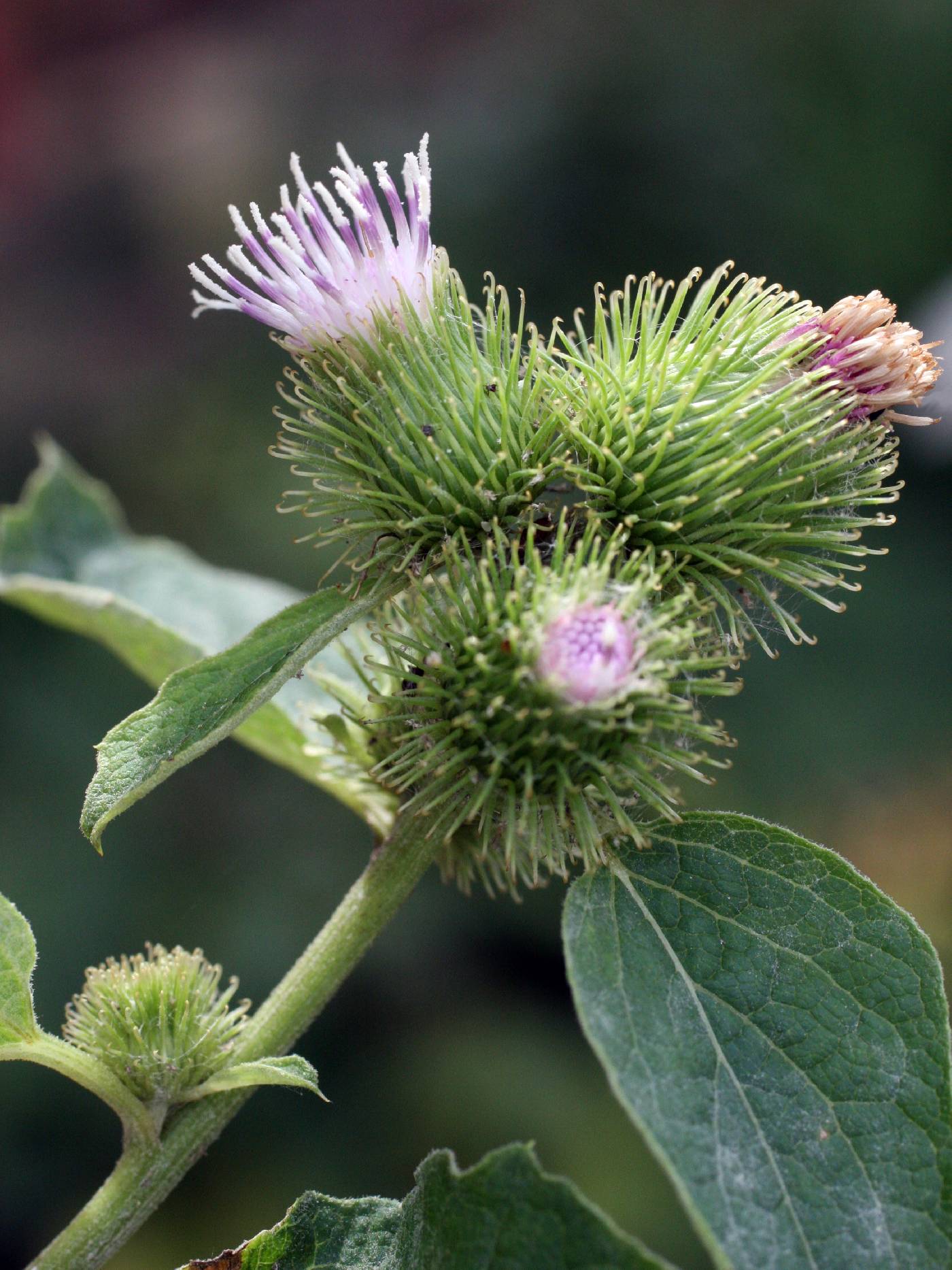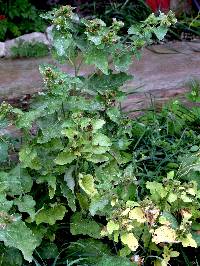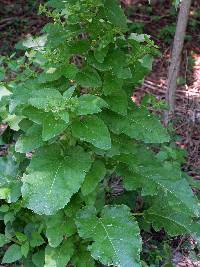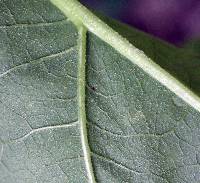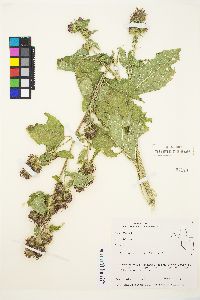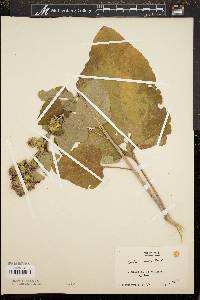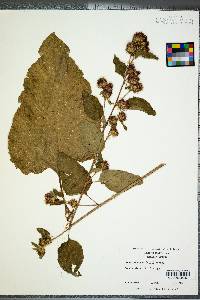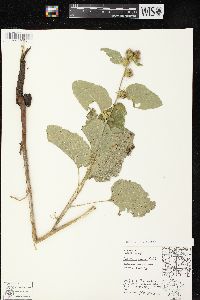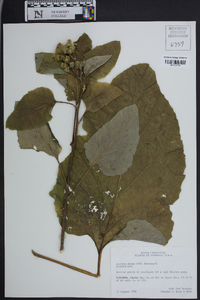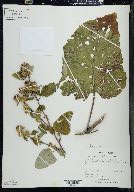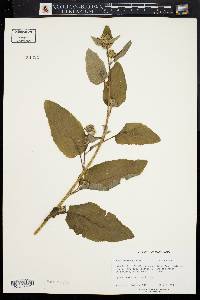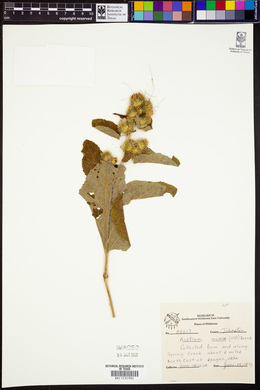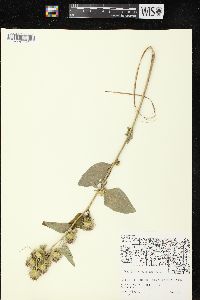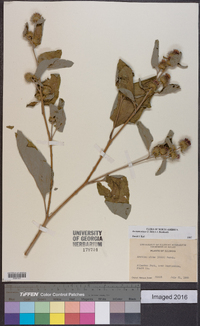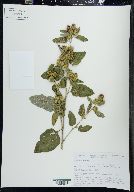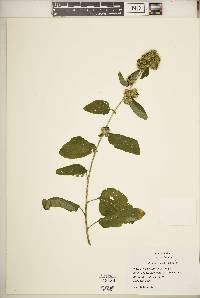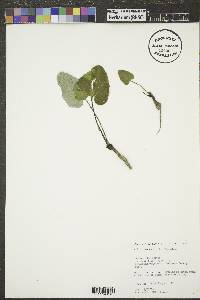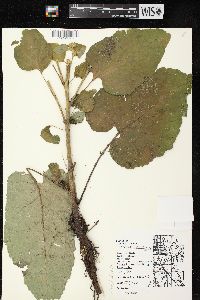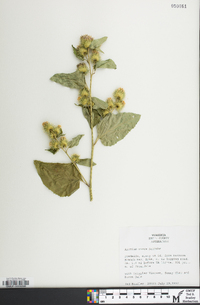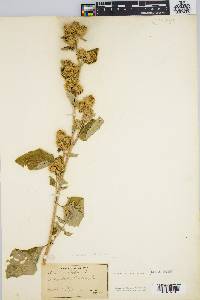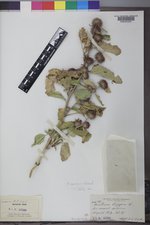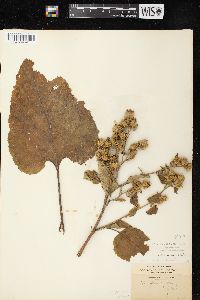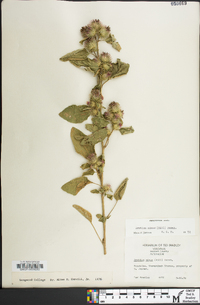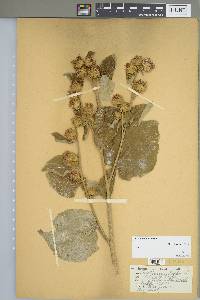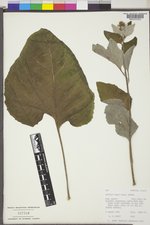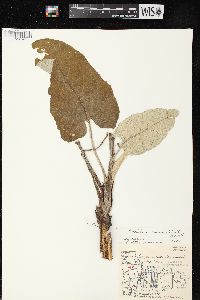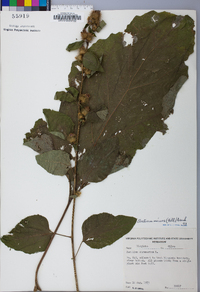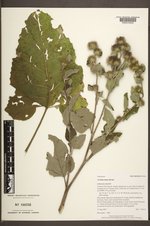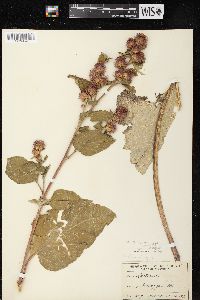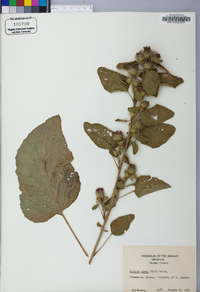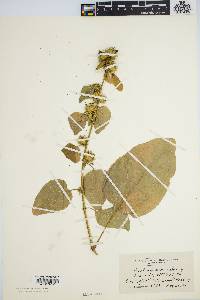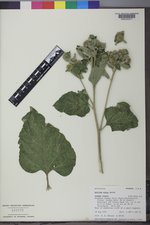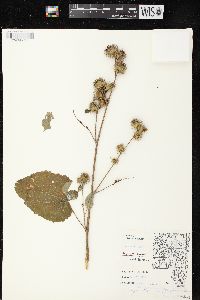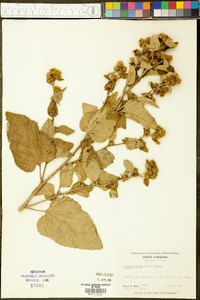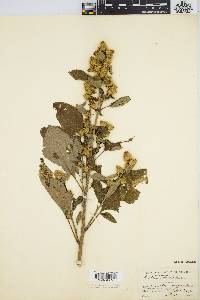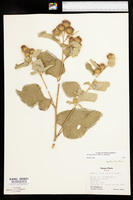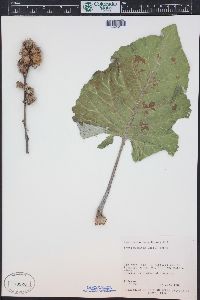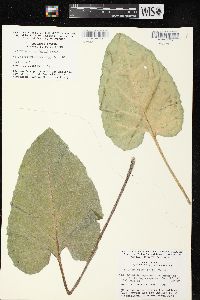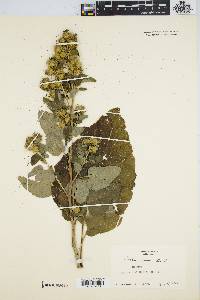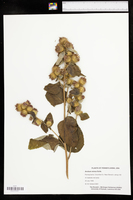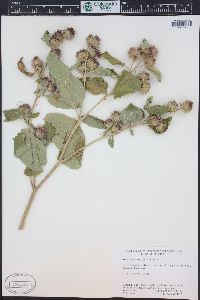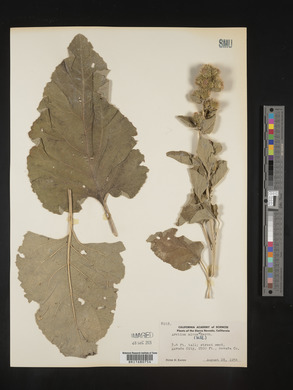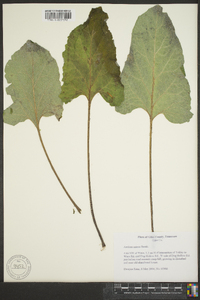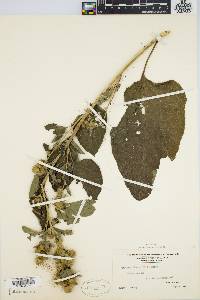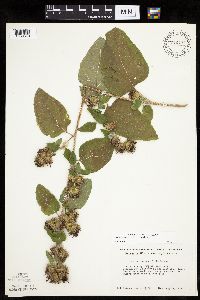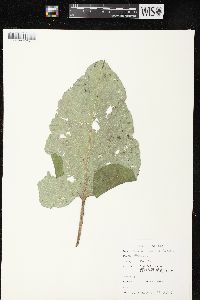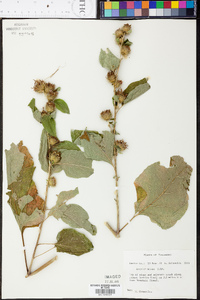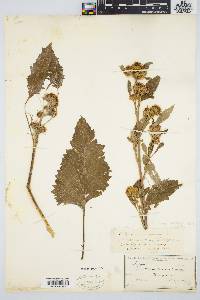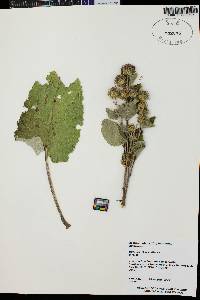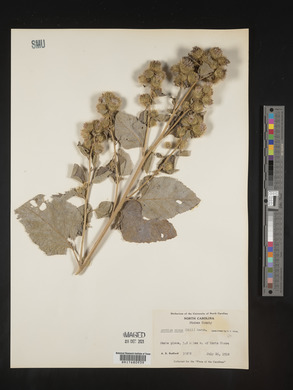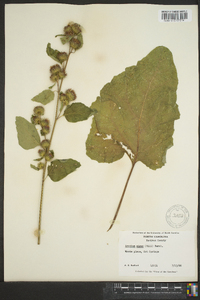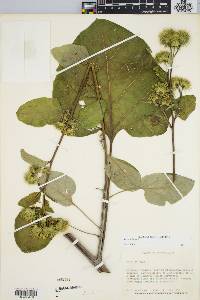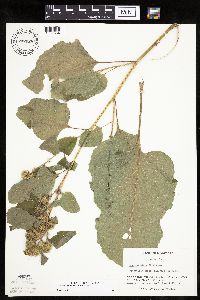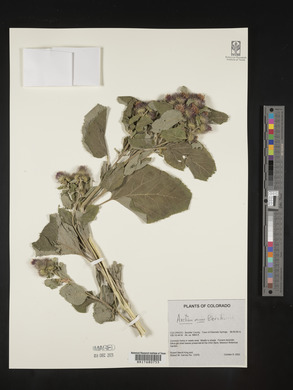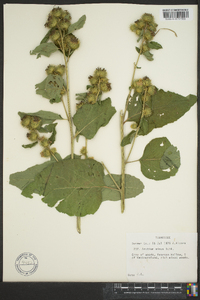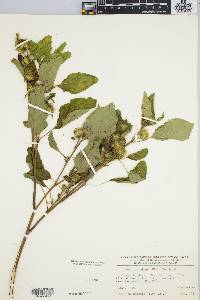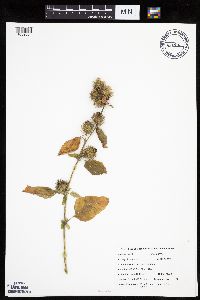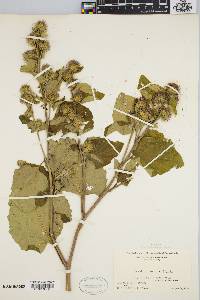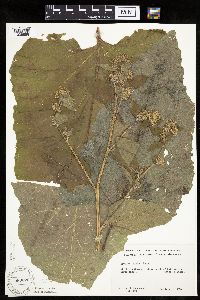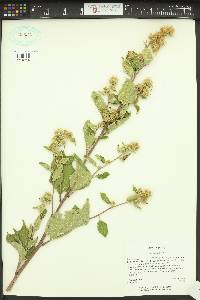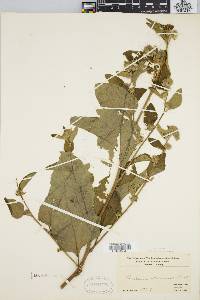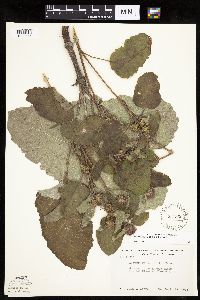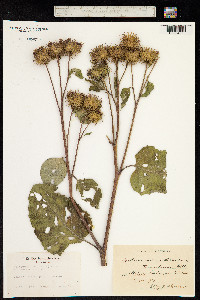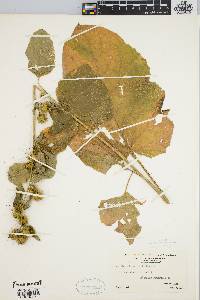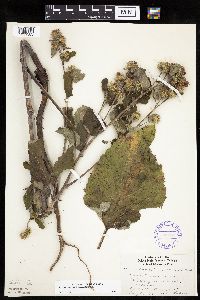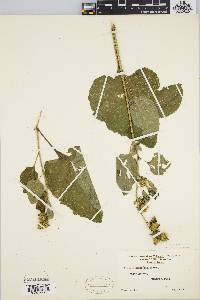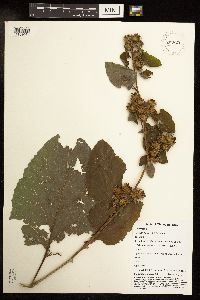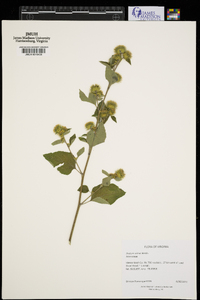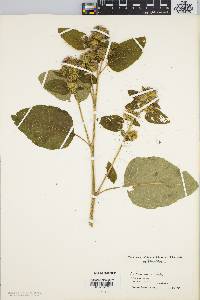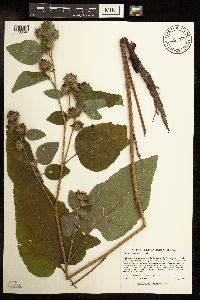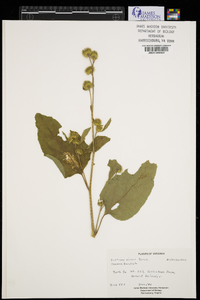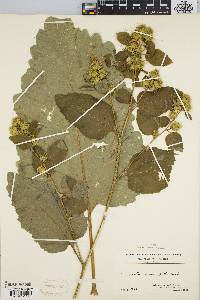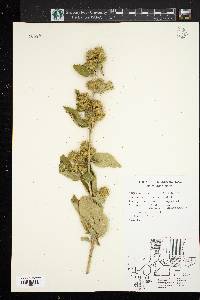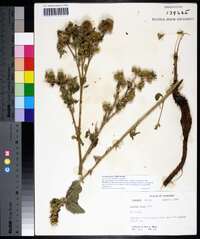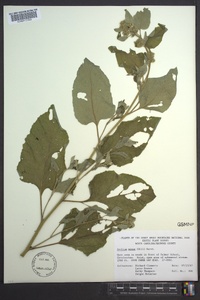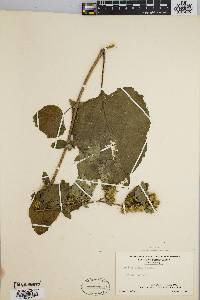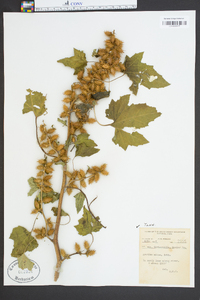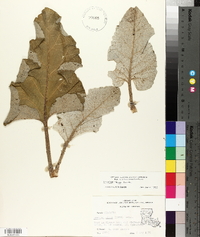
|
|
|
|
Family: Asteraceae
Lesser Burrdock
[Lappa minor Hill] |
Plants to 50-300 cm. Basal leaves: petioles hollow (sometimes only at base), 15-50 cm, thinly to densely cobwebby; blades 30-60 × 15-35 cm, coarsely dentate to subentire (rarely deeply dissected), abaxially ± thinly gray-tomentose, adaxially green, sparsely short-hairy. Heads in racemiform or paniculiform clusters, sessile to pedunculate. Peduncles 0-9.5 cm. Involucres 15-40 mm diam. Phyllaries linear to linear-lanceolate, glabrous to densely cobwebby, inner often purplish tinged, margins often minutely serrate with fine teeth, puberulent with glandular and or eglandular hairs. Florets 30+; corollas purple, pink, or white, 7.5-12 mm, glabrous or limb glandular-puberulent. Cypselae dark brown or with darker spots, 5-8 mm; pappus bristles 1-3.5 mm. 2n = 32 (Germany), 36 (as A. nemorosum). Flowering summer-early fall (Jul-Sep). Waste places, roadsides, fields, forest clearings; 0-2200 m; introduced; St. Pierre and Miquelon; Alta., B.C., Man., N.B., Nfld. and Labr. (Nfld.), N.S, Ont., P.E.I, Que., Sask.; Ala., Ariz., Ark., Calif., Colo., Conn., Del., D.C., Ga., Idaho, Ill., Ind., Iowa, Kans., Ky., Maine, Md., Mass., Mich., Minn., Miss., Mo., Mont., Nebr., Nev., N.H., N.J., N.Mex., N.Y., N.C., N.Dak., Ohio, Okla., Oreg., Pa., R.I., S.C., S.Dak., Tenn., Tex., Utah, Vt., Va., Wash., W.Va., Wis., Wyo.; Eurasia. Arctium minus has been reported from Delaware and Texas; I have not seen specimens. Arctium minus is a complex species with many variants that have been recognized at ranks ranging from forma to species (J. Arènes 1950). Some North American workers (e.g., R. J. Moore and C. Frankton 1974) have often distinguished plants with involucres more than 3 cm diameter that equal or overtop the corollas as A. nemorosum. Arènes treated those plants as a subspecies of A. minus. Arctium nemorosum was recognized as a species distinct from A. minus (H. Duistermaat 1996), with a different and more restricted circumscription than that used by North American workers. Although most of the characters that Duistermaat used to separate those A. nemorosum from A. minus overlap extensively, the consistently wider mid phyllaries of A. nemorosum (1.7-2.5 mm wide versus 0.6-1.6 mm in A. minus) supposedly distinguish the species. None of the North American specimens examined in preparation of this treatment had the wide phyllaries of A. nemorosum in the sense of Duistermaat, who stated that she had seen no material of this taxon from the American continent. Some American authors have taken up the name Arctium vulgare in place of A. nemorosum and applied A. vulgare (dubbed woodland burdock) to the larger-headed North American plants. Duistermaat considers A. vulgare to be a synonym of A. lappa.
Duration: Biennial Lifeform: Forb/Herb General: Introduced biennial, 50-300 cm tall; stems robust, branched, reddish; taprooted. Leaves: Basal and cauline, alternate, narrowly to broadly ovate, 30-60 cm long, 15-35 cm wide, green and sparsely short- hairy above, thinly gray tomentose below, base cordate, apex acute to acuminate, margin coarsely dentate to nearly entire; petiole 15-50 cm long, the lower ones mostly hollow, with sparse to dense cobwebby hairs. Flowers: Heads solitary; phyllaries mostly 21-35 in 3-5 series, sparsely long-hairy, margins membranous; receptacle cone- or dome-shaped, with thin dry scales towards the middle; ray flowers 10-15, 5-15 mm long, sterile, white; disk flowers numerous, 2-2.5 mm long, perfect, yellow, sparsely gland-dotted; flowers April-August. Fruits: Achene, obovoid, somewhat compressed, 4-8 mm long, gray to light black, generally mottled; pappus of numerous bristles in 2-4 series, 1-3.5 mm long. Ecology: Roadsides, ditches, fields, forest openings, waste places; 900-2400 m (3000-8000 ft); Apache, Coconino, Navajo, and Yavapai counties; widespread throughout North America. Notes: This species is best recognized by its relatively large leaves and the hooked bristles of its phyllaries. Lesser burdock is considered an effective liver tonic, useful in treating water retention, rheumatoid conditions, skin disorders, and high blood pressure. Leaves may be used for a head covering. Synonyms: Lappa minor Editor: Springer et al. 2008 To 1.5 m, rarely more; lvs petiolate, the lower petioles mostly hollow, the blade narrowly to very broadly ovate, cordate at base, to 5 נ4 dm, thinly tomentose or eventually glabrate beneath, subglabrous above; branches of the infl ascending to widely spreading, racemiform or subthyrsoid, the heads mostly short-pedunculate or subsessile; invol 1.5-2.5 cm thick, glabrous or slightly glandular to sometimes evidently arachnoid-tomentose, usually a little shorter than the fls, greenish-stramineous or a little purplish, the inner bracts often more flattened than the others and scarcely hooked; achenes 4-5.5 mm; 2n=32, 36. Native of Eurasia, now established on roadsides and in waste places throughout most of the U.S. and s. Can. Gleason, Henry A. & Cronquist, Arthur J. 1991. Manual of vascular plants of northeastern United States and adjacent Canada. lxxv + 910 pp. ©The New York Botanical Garden. All rights reserved. Used by permission. From Flora of Indiana (1940) by Charles C. Deam Infrequent to frequent throughout the state. Commonly found in rich soil about habitations, but also found along roadsides, in waste grounds, and open woodland. Since it is avoided by stock, it has little to prevent its spreading. The roots are used in medicine. ...... Indiana Coefficient of Conservatism: C = null, non-native Wetland Indicator Status: FACU Diagnostic Traits: Coarse biennial; basal leaves to 30 cm, cordate; petioles solid; inflorescences racemose, pedicles to 3 cm; heads globose, mostly 1.5-3 cm wide with disc flowers only; phyllaries hook-tipped, minutely serrulate on margins and often purplish toward their tip. |

